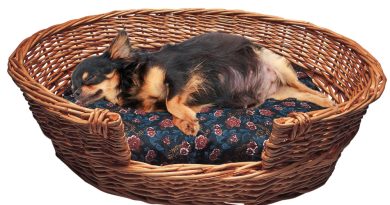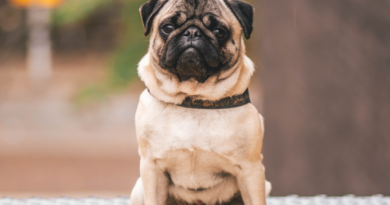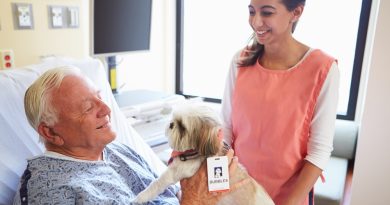How to train your Pug effectively and affectionately
How to train your Pug, have a mind of its own? Are you tired of dealing with constant barking, jumping, or destructive chewing? You’re not alone! Many Pug owners face similar challenges.
So, you’ve got yourself a squishy, wrinkly little Pug. Congratulations! These adorable pups are full of personality, but they can also be quite the handful. Don’t worry, though! With a little patience and the right guidance, you can train your Pug to be the well-behaved companion of your dreams.
In this guide, we’ll cover everything from basic commands to solving common behavioral issues. Get ready to have some fun and create a strong bond with your furry friend!
Creating a Positive Environment
- Choose the ideal place: A quiet place, free from distractions, such as the living room.
- Prepare the treats: Use small, tasty treats, such as dehydrated fruits or pieces of meat.
- Keep the sessions short and fun: Start with 5-10 minute sessions and gradually increase.
- Be patient and consistent: Training takes time. Celebrate every small achievement!
Teaching Basic Commands
- Sit:
- Hold a treat above your Pug’s head.
- Move the treat backward, encouraging him to lower his head and bottom.
- The moment he sits, say “sit” and offer the treat.
- Down:
- Starting from the sitting position, move the treat towards the ground, following the line of the Pug’s body.
- Reinforce with the command “down” and offer the treat when he lies down.
- Stay:
- With your Pug standing, say “stay” and take a step back.
- If he remains in place, reward him immediately. Gradually increase the distance.
- Come:
- Use an excited tone and a treat to attract your Pug.
- When he comes to you, say “come” and reward him.
Socialization and Exposure
- Introduce your Pug to different people and animals: Start in a safe and controlled environment.
- Take your Pug for walks in different places: Expose him to various environmental stimuli.
- Participate in socialization classes: Offer opportunities for your Pug to interact with other dogs.
Dealing with Common Problems
- Excessive barking: Identify the cause (boredom, anxiety, alert) and use techniques such as ignoring, offering toys and training the “quiet” command.
- Destructive chewing: Offer safe chew toys, hide valuables and supervise your Pug during playtime.
- Separation anxiety: Accustom your Pug to your absence gradually, create a routine before leaving and offer interactive toys to distract him.
Environmental Enrichment
- Offer interactive toys: Stimulate your Pug’s mind with challenging toys.
- Create a safe environment to explore: Allow your Pug to explore the environment safely.
- Spend quality time with your Pug: Play, pet and strengthen the bond.
Conclusion
Training is an exciting journey that strengthens the bond between you and your Pug. With patience, consistency and lots of love, you will transform your companion into a well-behaved and happy dog. Remember, each Pug is unique, so adapt this guide to your pet’s needs.
Additional Resources:
- Demonstration videos: Search for videos on YouTube to visualize training techniques.
- Books and articles: Consult books and articles specializing in dog training.
- Professional trainers: Consult a qualified trainer for personalized guidance.
Remember: Training is an ongoing process. Have fun while learning and discovering your Pug’s unique personality!
FAQ: Training Your Pug
1. What is the ideal age to start training my Pug?
As soon as possible! Socialization and basic commands can begin as soon as your puppy is vaccinated and ready to leave the house. The earlier you start, the easier it will be to shape your Pug’s behavior.
2. What treats are best for training?
Opt for small, healthy and highly attractive treats for your Pug. Dehydrated fruits, cooked meat pieces or high-quality kibble can be great options. Avoid treats with too much sugar or fat.
3. What if my Pug is not interested in the treats?
If your Pug doesn’t show interest in the treats, try varying the flavors or texture. You can also use interactive toys that dispense treats as a reward. Consult a trainer for personalized tips.
4. How much time should I dedicate to training per day?
Keep the sessions short and fun, initially 5-10 minutes. Frequency is more important than duration. Several short sessions throughout the day are more effective than one long session.
5. What if my Pug gets distracted during training?
Distraction is common, especially in puppies. Choose a quiet environment, eliminate distractions as much as possible and start with simple commands. If he gets distracted, interrupt the session and try again later.
6. How to deal with Pug’s stubbornness?
Stubbornness is a common trait of the breed. Stay calm, be consistent and offer generous rewards. If you need help, consult a professional trainer.
7. My Pug is afraid of other people or animals. What can I do?
Socialization is essential to overcome fears. Start with short and positive interactions in a safe environment. Reward your Pug when he shows calmness and confidence. If the fear is intense, consult a professional.
8. My Pug destroys everything at home! How can I prevent this?
Offer appropriate chew toys, hide valuables and supervise your Pug during his alone time. Environmental enrichment can also help reduce anxiety and boredom.
9. My Pug barks excessively. What can I do?
Identify the cause of the barking (boredom, anxiety, alert) and work to eliminate it. Train the “quiet” command, offer toys and activities that distract him and consult a professional if the problem persists.
10. What if I can’t train my Pug alone?
Don’t worry! Many owners need professional help. Consult a qualified trainer for personalized guidance and learn effective techniques to train your Pug.



